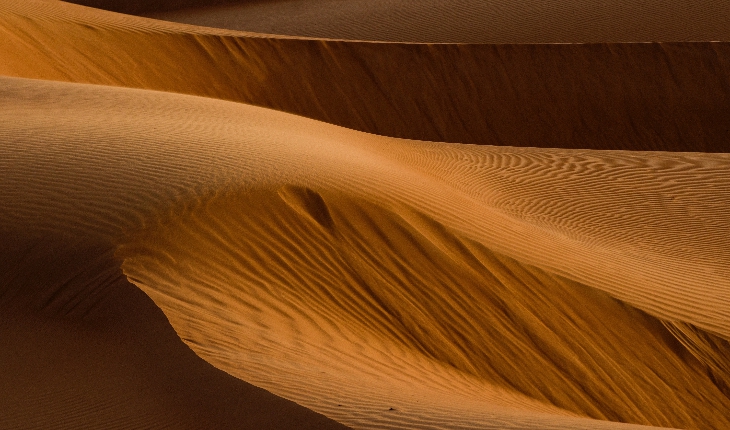
Dune sand
Sand dunes are hills of sand that are made by winds as they blow across deserts. The more powerful the wind is, the farther it can carry particles of sand before they drop to the ground. As they roll and bounce on the ground, these particles create small, wave-shaped ripples of sand. These ripples can build; up into larger structures, called dunes. With strong, long-lasting winds, sand dunes can grow very high and be many miles long. Strong winds can also blow sand dunes very slowly along the desert. Sand dunes can be various shapes, such as crescents, stars, or just repeated lines.
A dune is a mound of sand formed by the wind, usually along the beach or in a desert. Dunes form when the wind blows sand into a sheltered area behind an obstacle. Dunes grow as grains of sand accumulate.
Every dune has a windward side and a slip face. A dune's windward side is the side where the wind is blowing and pushing the material up. A dune's slip face is simply the side without wind. A slip face is typically smoother than a dune's windward side.
A collection of dunes is called a dune belt or dune field. A large dune field is called an erg. The Skeleton Coast Erg in Namibia extends 2-5 kilometers (1-3 miles) in length and across a width of 20 kilometers (12.7 miles).
Dunes can also be formed by strong currents beneath the water. Underwater dunes, called subaqueous dunes, are common in the ocean, rivers, and canals.
Shapes of Dunes
Dunes can be very large geographic features or just small bumps. Most sand dunes are classified by shape. There are five major dune shapes: crescent, linear, star, dome, and parabolic.
Crescent dunes are shaped like crescents or the shape of a wide letter C. The wide side of a crescents dune is its windward side, with a small, semicircular slip face on the other side. Crescents dunes are the fastest-moving type of dune, and also the most common.
Linear dunes form straight or nearly straight lines. Some linear dunes are shaped like a wiggling snake, with regular curves. Linear dunes develop where wind pressures are nearly equal on both sides of a dune.
Star dunes have pointed ridges and slip faces on at least three sides. Star dunes develop where winds come from many different directions. The sand dunes of the Sahara Desert ergs are star dunes.
Dome dunes are the rarest type of dune. They are circular and do not have a slip face. The wind can blow material onto the dune from any side.
Parabolic dunes are similar to crescents dunes. Their shapes are roughly the same, but the slip face of a parabolic dune is on its inward side. Parabolic dunes are also called blowouts, because winds blow out the center of the dune, leaving just a rim on the outside.